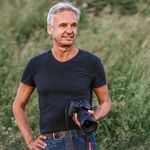Effective movement instead of muscle bulk
In order to grow muscle bulk you need to work on coordinated, powerful movements that recruit the larger muscles groups. If the appearance of muscle mass is the goal, this is the best way to get there. What will become apparent is that sheer muscle mass does not necessarily mean effective movement. If we compare a body builder to a sprinter, we see that the sprinter may have less maximum power output, but their overall movements are much more efficient.
This phenomenon has its origins in the very beginning of human existence. Over the course of human evolution, bulky muscles were more of a hindrance because muscle requires more energy to be sustained, meaning more food to be hunted or gathered. On top of that, muscles that are too big weigh you down and are cumbersome. In a nutshell, your survival chances were much better if you could move effectively using as little energy as possible. For this, optimized movements combined with a lower muscle mass is ideal.
For this reason, our fascial network is developed in a way to store and release impulses. The fascia flows throughout the entire body in long lines. They connect muscles to one another to created an interconnected entity. If the body is hit by a pulse, it deforms the entire fascial line and stored the energy it receives. This energy can be released later in the next movement.
Rebound Effect: Power without bulky muscle
If we understand that over the span of human evolution it was essential to move using as little energy as possible, we can clearly see that this aspect has played a major role in the survival of our species. As a matter of fact most animals convert kinetic energy into tensile energy and vice versa. This property of fascia is known as the rebound effect.
The rebound effect can be found across the animal kingdom. Not only in mammals, but also in birds, reptiles and amphibians. This bouncing in and back is what gives elegant grace to the movements of every creature.
If we use this elastic quality and train it well, we can develop strength without bulking up with too much muscle. In this way, you can also minimize your energy consumption requirements.
Man: As with all mammals, the human being utilizes this elasticity with each step and every movement. In human walking and running, the fascial system stores energy in every step. It's not just your calf muscles that are involved. When your heel hits the pavement the impact is absorbed in the fascial back line that runs all the way up the the back of the head.
Creeping Effect: Increase flexibility by slowing down
Power needs to be complimented by sufficient flexibility in order to create efficient movement. Flexibility allows us to create the necessary space in order to take on new shapes and forms.
While short pulses cause the rebound effect on fascia, an appropriately long pull on the fascial lines will deform them. This happens because the tension causes the molecular components (collagen fibers) to align themselves along the line. In this way, the fascial sheaths can glide smoothly past one another. The fascial system needs about 30 seconds of tension to trigger the so-called creeping effect.
Repetitive Stretching: The most effective way to increase flexibility
But watch out! If we hold the stretch too long, or pull too hard, the molecular fibers become entangled. The result is hardening of the fascia, which works counter to our goal of being more limber. The phenomenon is known as the hardening effect.
It is in fact advisable to move in and out of a stretched position to avoid this effect. Warming up the fascia in movement has been proven to avoid this entangling of the fibers and will actually loosen things up so that the next stretch can be repeated with better efficacy. The new repetition of stretching will in turn re-trigger the creeping effect.
Alternating Rebound and Creeping
So, let's say that we are performing a powerful, explosive movement. This would be an exercise that activates the rebound effect. As you know, there will be a point where you are fatigued and cannot go on with the movement, and this happens relatively quickly with such movements. Often times there is a recovery period required.
This break can be optimized through a stretch which will activate the creeping effect. The muscles are warmed up and the fascia have the right level of tension to get the most out of the stretch. Thus, we can utilize the recovery period effectively, all the while still allowing us to catch our breath between rounds. Before we cool down too much and bring on the hardening effect, we dive straight into the next round.
The series of exercises described below builds on this principle. We become strong and more flexible at the same time.
Myofibroblasts: Relaxation for the fascial fibers
With the activities we described above, we have contributed a lot to the health of our fascial system. The properties of fascia are not limited to the collagen fiber molecules, but also connective tissue cells, knows as myofibroblasts. These cells regulate the tension of the system based on what is required. Myofibroblasts pull collagenous fibers toward them, thus stretching the fascial network.
The activation of this function of the myofibroblasts is initiated by injuries, stress and excessive acidity. If we suffer from chronic stress, our fascial network hardens as a result. The result is stiffness and decreased mobility.
The easiest way to deactivate the myofibroblasts is through relaxation. Through relaxation, they begin to release the collagen fibers again. This is why we feel not only mentally balanced after a good relaxation, but also physically more soft and elastic.
Exercise Sequence
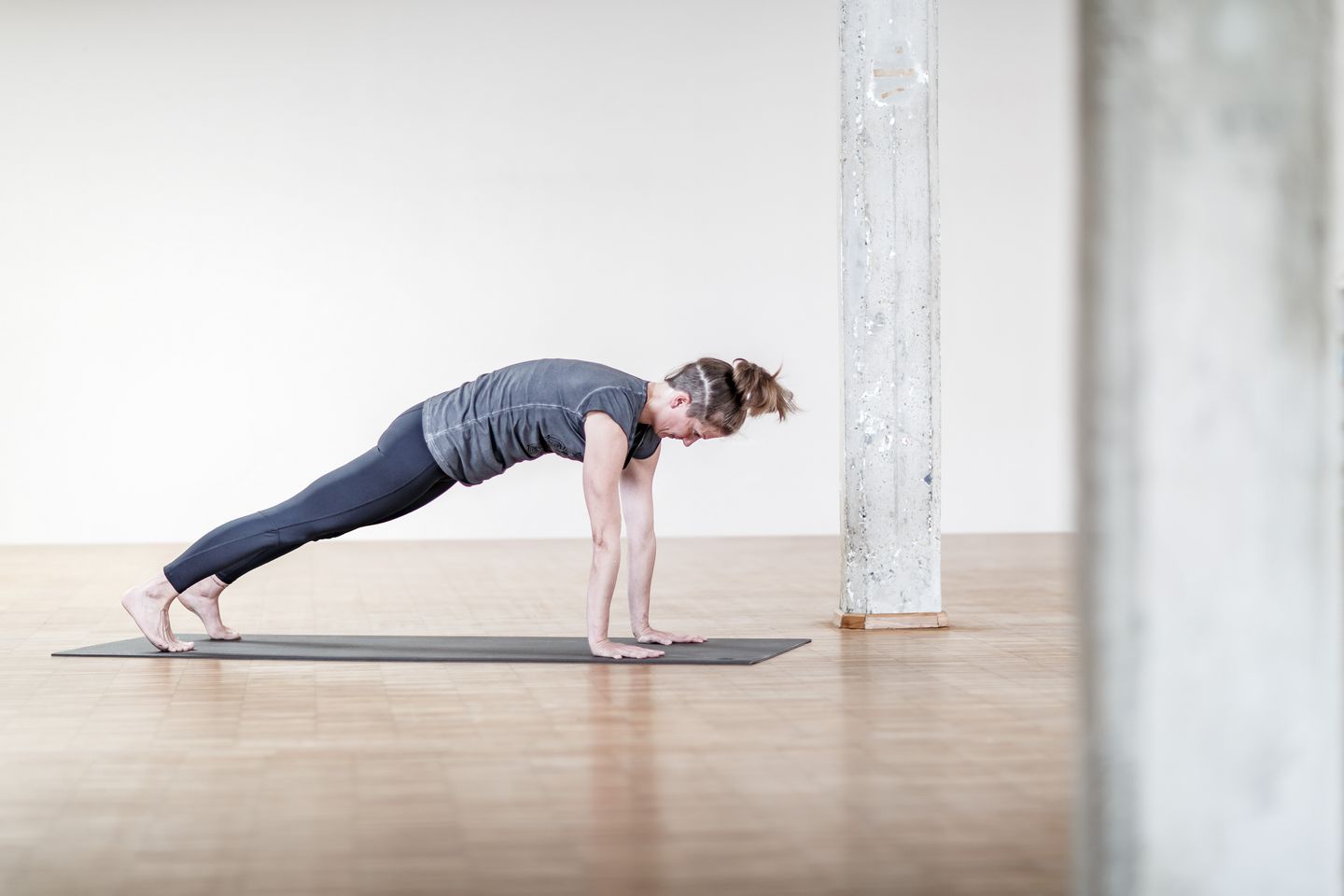
This series of exercises is a bit different from others that you may be familiar with. Here powerful, explosive movements are alternated with repetitive stretching. We begin with powerful movements which activate the rebound effect, then we move into a phase of stretching which activates the creeping effect for flexibility. Combining the two effects in such a way compliment one another. At the end, we enjoy a long constructive rest period to allow our myofibroblasts to release their pull, which will allow us to wake up with refreshed with a notable softness in our fascial network.
Sprinter – Round 1 (Rebound Effect)
Start in plank. Be sure to push into the floor in such a way that your shoulders are floating directly on your ribs. Activate tension in your core in order to hollow out the belly a bit. Your pelvis will be a bit over the line of your shoulders to heels (Fig 1).
Lift your right leg and draw the knee in towards the right armpit. Hold and then set the foot back down. Repeat slowly with the left side now. Start to slowly increase your speed until you can feel the bouncing effect of the movement (Fig 2).
Keep going until you are out of breath.
Effect: Here you are working the elasticity of the fascial system. The movement will eventually emulate uphill running. The human body has developed many mechanisms designed to store the energy from each step and release it with the next. At a given pace, the human being is actually the land-dwelling creature with the most energy-efficient movement.
Backbend – Bow Pose (Creeping Effect)
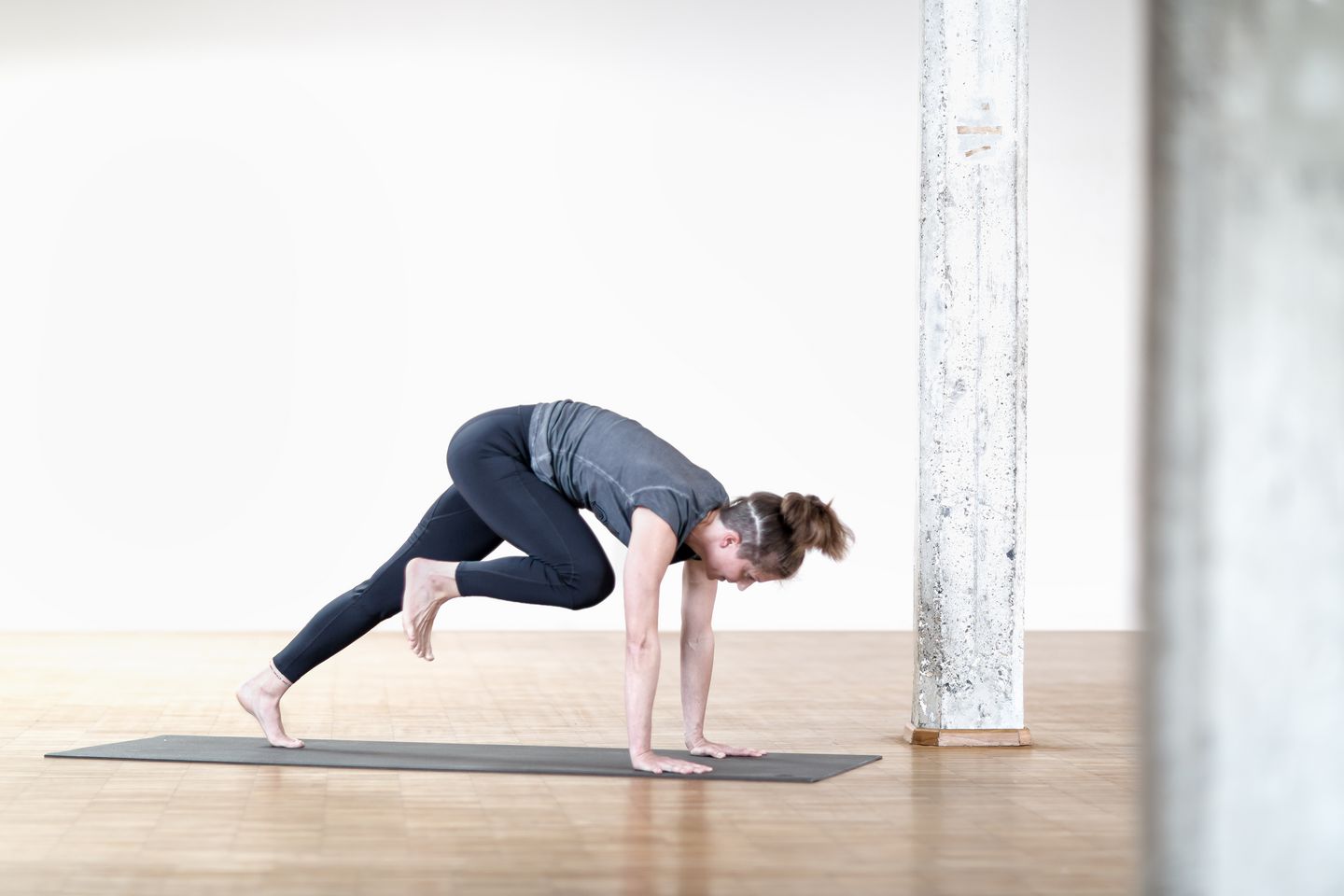
For the first round, start in a prone position on the ground. Lift your legs back and up and catch your shins with your hands. Stretch your legs actively. Enjoy the stretch across the front body over the next 5 breaths, taking care to breath slowly and deeply (Fig 3).
Effect: This pose lengthens the front line. This fascial line spans across the entire front body. In holding the pose for 30 seconds, we access the creeping effect. The fascial lines get longer and more flexibility is cultivated.
Forward bend – Pashchimottanasana (Creeping Effect)
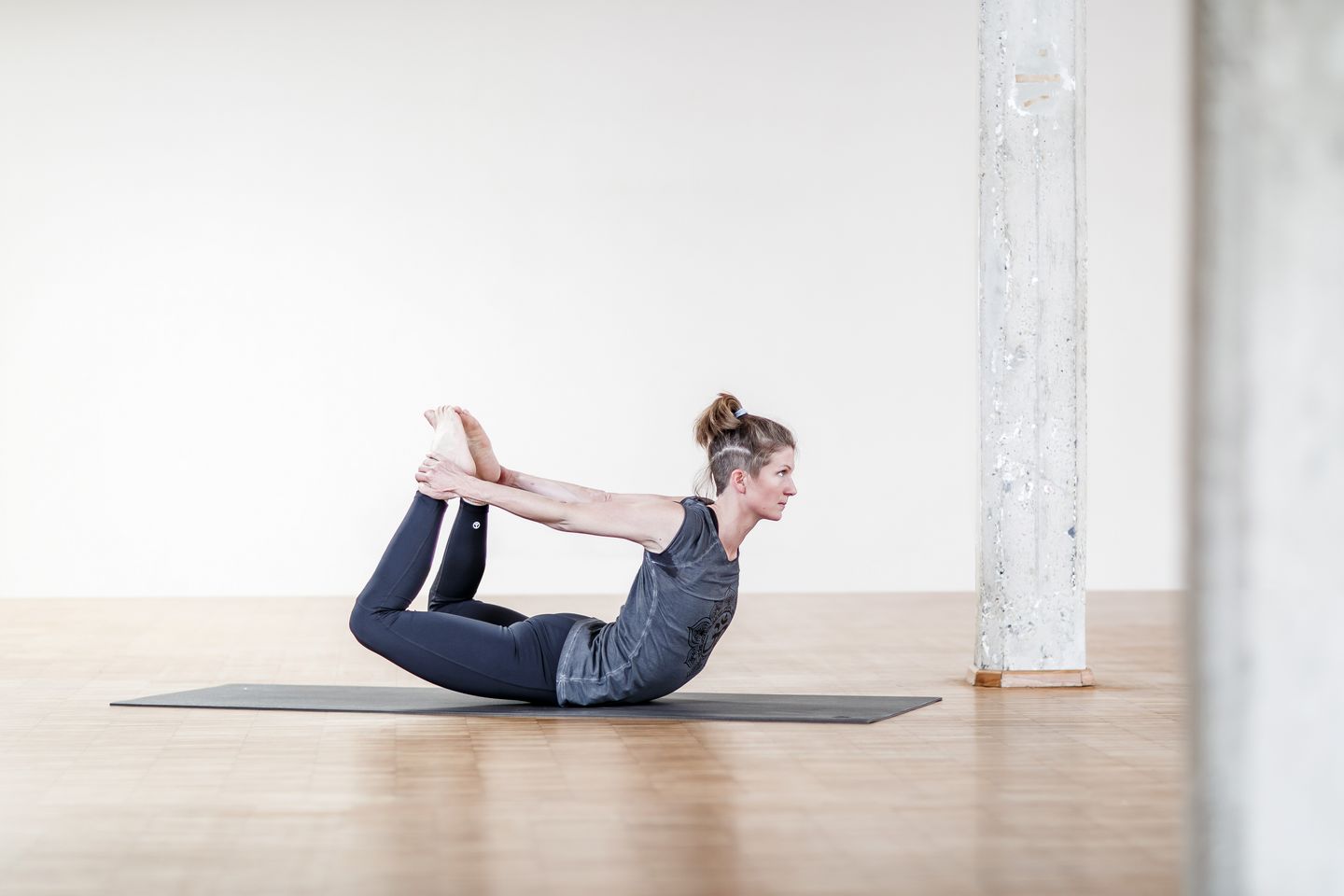
Then find an upright seat on the floor. Stretch your legs out in front of you. Be sure not to overextend the knees. In order to sit directly on your sitzt bones, you may try pulling the buttocks flesh out to the side, and or bend your knees.
Stretch yourself over your legs and hold on to the outer edges of the feet. Again here breathe slowly and deeply for about five breaths, taking special care to create space for lengthening the back. Enjoy the stretch along the backs of the legs upwards along the entire back body (Fig 4).
Effect: Now we are lengthening the back line of fascia. This line travels from the sole of the foot, along the entire back body all the way up to the eyebrows. Again the 30 second hold allows us to trigger the creeping effect, thus lengthening the fascia of the back body.
Sprinter – Round 2 (Rebound Effect)
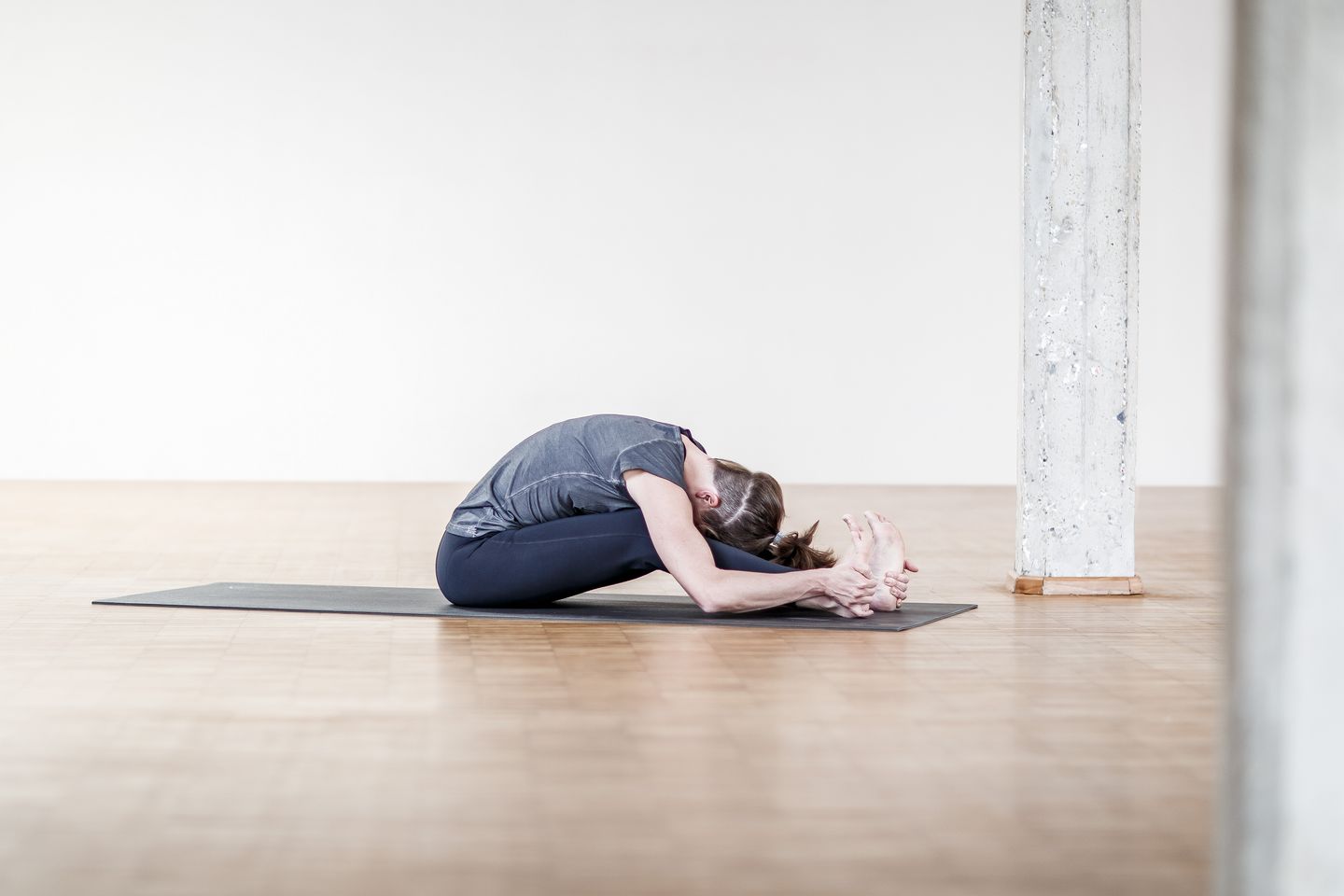
Repeat a second round of sprinter. If you want more of a challenge, start to lift one hand from the ground (Fig 5).
Effect: Here we revisit the opposite end of the spectrum. This dynamic movement, in contrast to static stretching, picks up the impulses from the movement. This generates heat which is needed to optimize the next stretch, and the fascia starts to pull to adapt to this new elastic challenge. Elastic fibers get lodged, which is important in maintaining stability even when higher levels of flexibility are present.
Backbend – Upward Facing Bow (Creeping Effect)
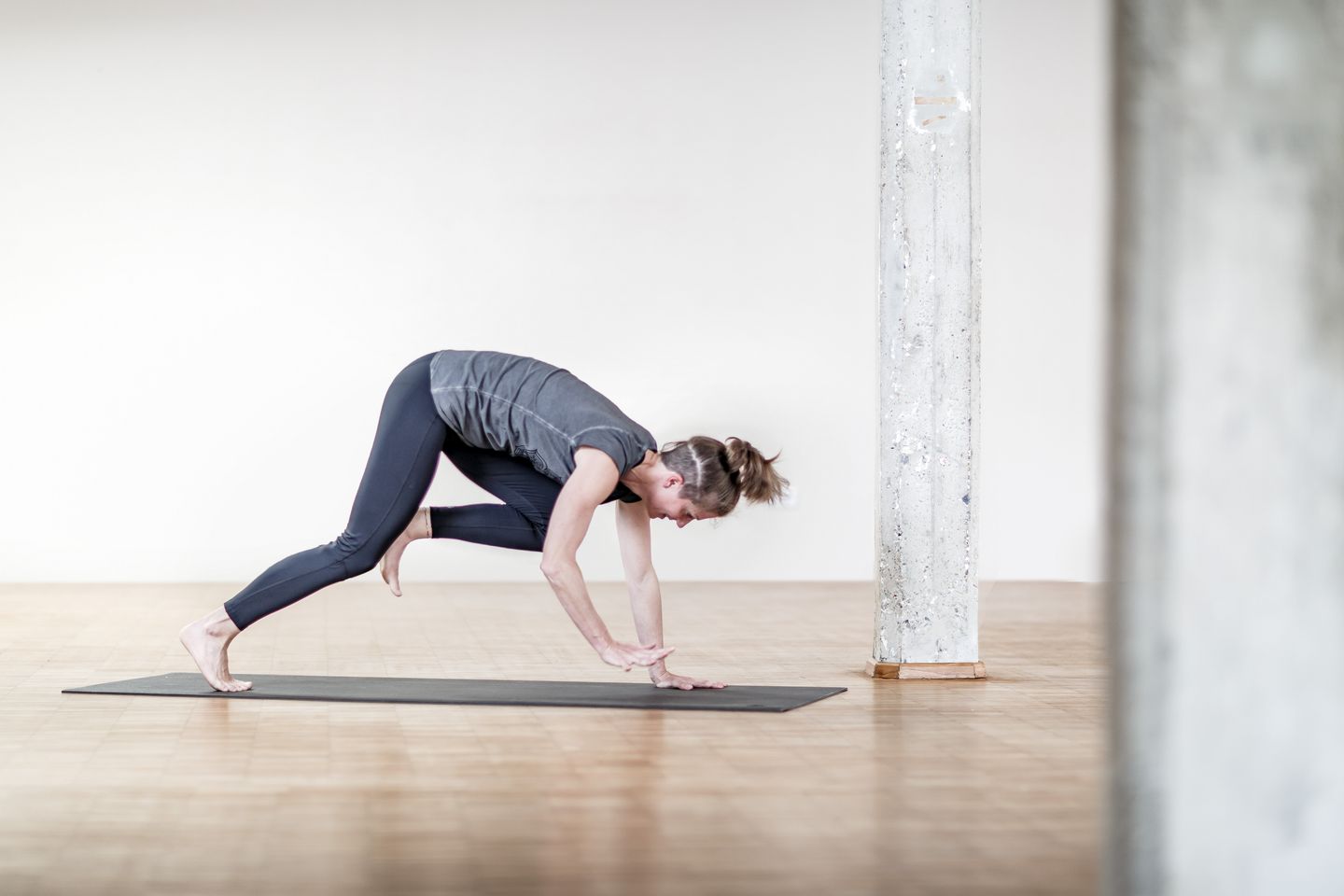
For the second round, we can further intensify the stretch. Start in a supine position on the ground. Lie down flat on your back. Place your hands on the floor close to your shoulders and your feet close to your hips. Make sure that the feet are approximately parallel and that the fingers turned slightly outwards.
On an inhale lift your pelvis upwards and then push upwards with your hands. Even though the stretch is intense, breath slowly and deeply for about five breaths (Fig 6).
Effect: The Upward Facing Bow pose is an even more intense stretch of the front fascial lines. Because of the position of the arms, the line extends even further. This pose is fundamental for building flexibility in all back bends.
Forward bend – Upavishta Konasana (Creeping Effect)
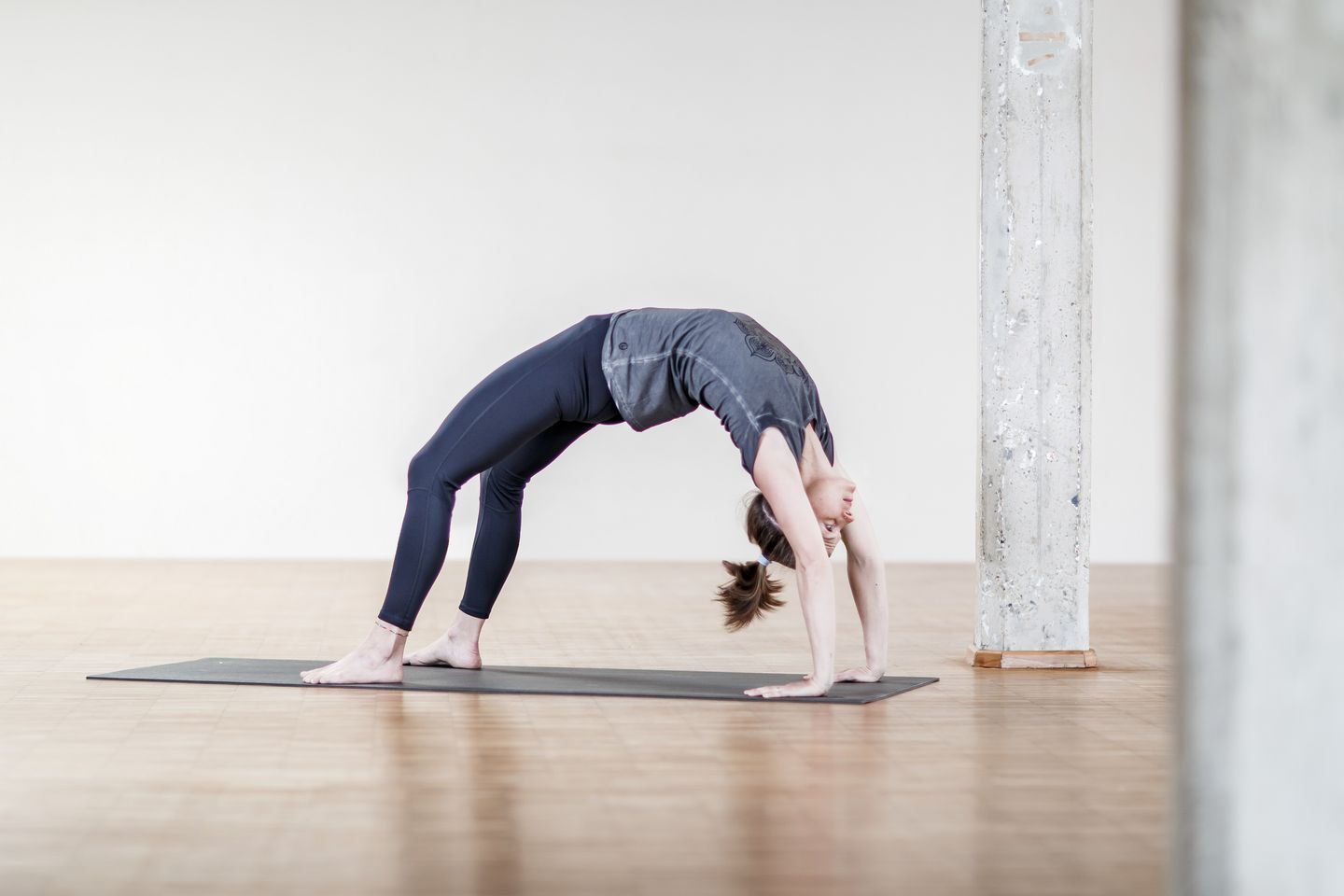
After stretching the front line, we switch to the back line with a forward bend. Her sit again upright and then take the legs out wide in a 'V' shape. Stretch forward between the your legs. Hold the stretch and breathe deeply for about 5 breaths (Fig 7).
Effect: Compared to the previous forward bend, the legs are now spread wide. Here we see the same back fascial line being stretched, but now at a slightly different angle. This allows us to develop more comprehensive flexibility.
Further Rounds
You can follow the blueprint of this principle to create further rounds. A dynamic exercise will be alternated with two stretching postures. The dynamic movement invigorates the fascia with energy, the first stretch stretches the front line and the second the back line.
If you vary each round a little bit, you will activate the fascia at a slightly different angle. This is ideal when you are re-triggering the rebound and creeping effect over and over again.
This practice is demanding, and you will certainly sweat. To close such a practice it is important to take a long and complete constructive rest. This will not only help with recovery, but it will also disable the myofibroblasts so that the cells of the fascial network can create more flexibility and softness.
Savasana
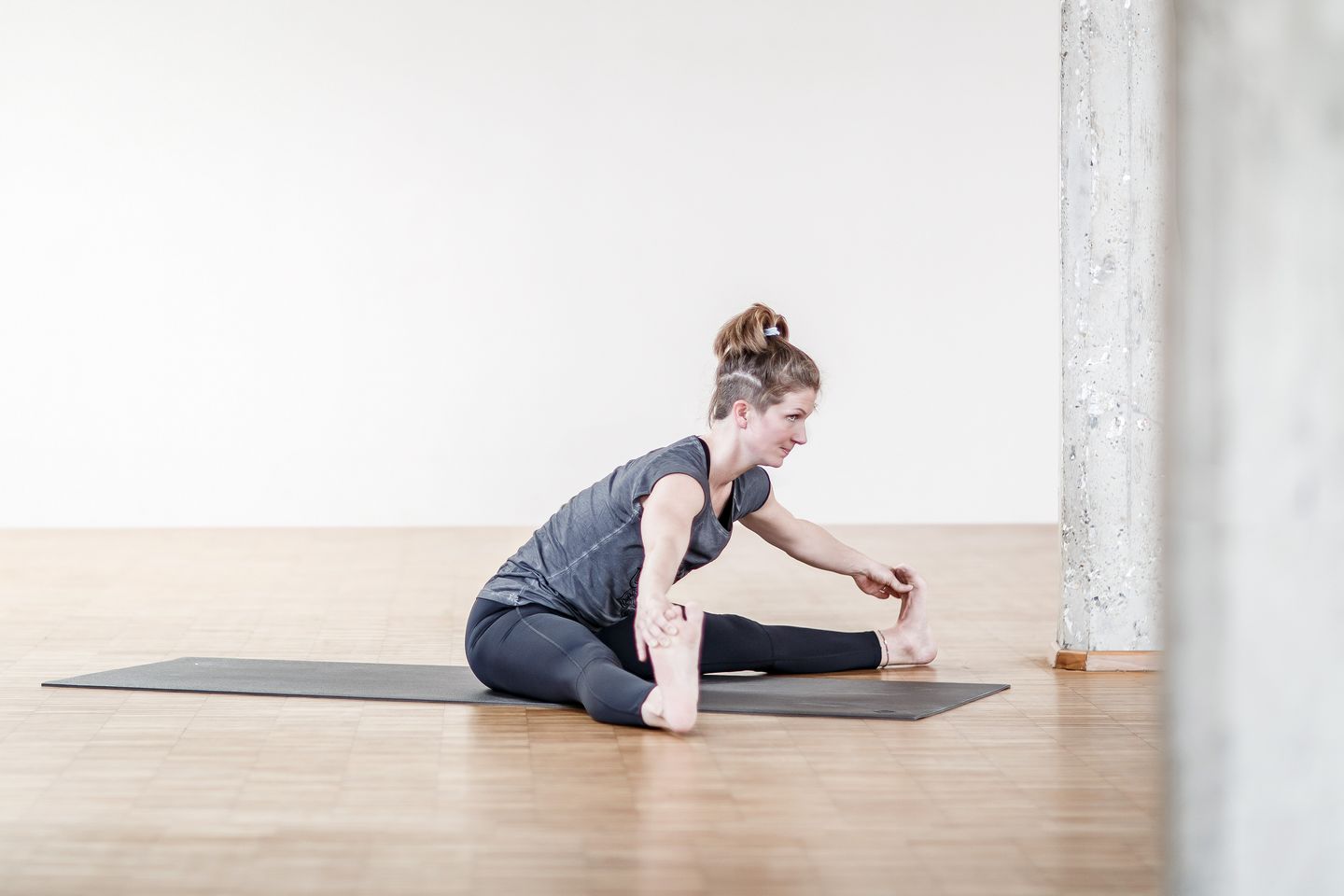
The classic form of constructive rest, or Savasana, is done lying supine on the floor. Place your hands about 20 cm to either the side of the body with the palms facing up. Your feet are also about 20 cm apart from one another and fall outwards to either side.
If you find this position uncomfortable, choose a position that will allow you to relax completely. Try different things such as lying prone or even on your side until you find a position that you find comfortable.
Close your eyes and allow your breath to become flatter. You may observe your heartbeat as it gradually beats more calmly. If you were sweating, observe how the sweat begins to evaporate from your skin leaving a mild tingling sensation. Rest until you feel complete calm (Fig 8).
Effect: Constructive rest is the most important part of the yoga practice. In relation to the fascial system, rest helps the myofibroblasts to loosen the collagen fibers that they are pulling toward them. The entire myofascial network becomes softer and our body becomes more flexible. Relaxation promotes flexibility.
Have fun practicing!
Teacher: Dr. Ronald Steiner
Yogini: Kristen Sikorsky Racco
Photographer: Paul Königer
Apparel: OGNX
Messages and ratings
-
-

Nina Reff
at 13.03.2021Hallo Ronald,
Vielen Dank für Deine Expertise und Deine Vermittlung von Handlungswissen. Die Vielseitigkeit der Bewegung (ich bin ein großer Fan der Dschungel-Reise) , so wie diese Rebound und [...] Hallo Ronald,
Vielen Dank für Deine Expertise und Deine Vermittlung von Handlungswissen. Die Vielseitigkeit der Bewegung (ich bin ein großer Fan der Dschungel-Reise) , so wie diese Rebound und Creeping Sequenz macht für mich total Sinn und ich spüre, dass ich mich viel zu lange einseitig bewegt habe. Ich habe allerdings folgendes Problem, ich kann keine schnellen Wechsel von Rückbeugen zu Vorbeugen machen oder vom längeren Liegen (Bauch- oder Rückenlage )in den Sitz kommen. Die dorsale Faszie macht total zu. Hast Du eine Idee, was ich machen könnte bzw. welche Sequenz sich für mich hier eignet oder wie ich die Praxis modifizieren kann. Liebe Grüße Nina-
Hallo Nina,
oh ja, da habe ich eine Empfehlung für Dich und zwar diese Sequenz:
https://de.ashtangayoga.info/yoga-therapie/therapeutische-tutorials/191023-faszientraining-im-yoga/
Die Elastizität [...] Hallo Nina,
oh ja, da habe ich eine Empfehlung für Dich und zwar diese Sequenz:
https://de.ashtangayoga.info/yoga-therapie/therapeutische-tutorials/191023-faszientraining-im-yoga/
Die Elastizität in den Faszien hilft, dass diese sich nach der Verformung wieder zurückstellen. Also genau dort wo Du diese Schwierigkeit hast. Das ist übrigens ein häufiges Phänomen bei Menschen, in deren Praxis die Dehnung dominiert.
Viel Freude beim Erfahren wünscht Dir
Ronald
-
-

Martina Paulus
at 28.01.2021Vielen Dank lieber Ronald, das beantwortet meine Frage zu den Myofibroblasten, und ich kann mit immer tieferem Verständnis in meine Praxis eintauchen...klasse :-) Vielen Dank lieber Ronald, das beantwortet meine Frage zu den Myofibroblasten, und ich kann mit immer tieferem Verständnis in meine Praxis eintauchen...klasse :-)
-
cool. Freue mich. cool. Freue mich.
-
-
Hi,
alles sehr inspirierend.
Ich würde gerne den "Hardening Effekt" besser verstehen...
Habt ihr mir dazu vielleicht eine Literatur- oder Studienempfehlung?
Insbesondere bei der Vorwärtsbeuge, [...] Hi,
alles sehr inspirierend.
Ich würde gerne den "Hardening Effekt" besser verstehen...
Habt ihr mir dazu vielleicht eine Literatur- oder Studienempfehlung?
Insbesondere bei der Vorwärtsbeuge, bzw. der Dehnung der Hamstrings habe ich schon länger das Gefühl kaum "vorwärts" zu kommen...
Danke
Hannes-
Hallo Hannes,
wau vielen Dank für Deine Nachricht. Ich habe mir Deinen Wunsch gleich für einen der nächsten Artikel notiert. Genaue Timline wann ich damit fertig bin und er online geht, kann ich [...] Hallo Hannes,
wau vielen Dank für Deine Nachricht. Ich habe mir Deinen Wunsch gleich für einen der nächsten Artikel notiert. Genaue Timline wann ich damit fertig bin und er online geht, kann ich leider nicht versprechen. Notiert ist es jedenfalls.
Namaste und herzliche Grüße
Ronald -
supi, freue mich.
Falls es da was gibt: so wie Rolfing oder Myofeflex darauf abzielt insbesondere die Muskelansätze zu "drücken", weil dort die höchste Dichte an den "Dehnungs- bzw. Spannungsmessern" [...] supi, freue mich.
Falls es da was gibt: so wie Rolfing oder Myofeflex darauf abzielt insbesondere die Muskelansätze zu "drücken", weil dort die höchste Dichte an den "Dehnungs- bzw. Spannungsmessern" ist, suche ich nach den Mechanismen auf zellulärer Ebene, welche den Hardening-Effekt beschreiben =)
Was "denkt sich unser Körper dabei", wenn er sich "hardened"... schützt er sich? sagt er uns, mach mal wieder was anderes?
Bin sehr gespannt...
Hannes -
Beim Rolfing zielen wir nicht darauf ab die Muskelansätze zu "drücken", es geht hier etwas komplexer um eine psychosomatische Verkörperung, stressige Gefühle bzw. Emotionen formen wir durch Anspannung [...] Beim Rolfing zielen wir nicht darauf ab die Muskelansätze zu "drücken", es geht hier etwas komplexer um eine psychosomatische Verkörperung, stressige Gefühle bzw. Emotionen formen wir durch Anspannung und diesen Mustern gehen sind wir auf der Spur. Es ist also weit mehr als eine weitere funktionelle Manualtechnik!
-
Hi Andreas,
sorry, ich wollte das Rolfing nicht als einfach eine "weitere Manualtechnik" abtun. Mir ist bewusst, dass es sehr viel mehr ist =) Ich wollte nur ein Beispiel für die "zelluläre Ebene" [...] Hi Andreas,
sorry, ich wollte das Rolfing nicht als einfach eine "weitere Manualtechnik" abtun. Mir ist bewusst, dass es sehr viel mehr ist =) Ich wollte nur ein Beispiel für die "zelluläre Ebene" anführen... -
Ich hab noch ein wenig gehirnt...
Könnte der "Hardening Effekt" möglicherweise eine Schutzmechanismus unseres Körpers sein, welcher ein Abrutschen in eine Dysbalance verhindert? Bezogen auf einen [...] Ich hab noch ein wenig gehirnt...
Könnte der "Hardening Effekt" möglicherweise eine Schutzmechanismus unseres Körpers sein, welcher ein Abrutschen in eine Dysbalance verhindert? Bezogen auf einen einzelnen Muskel oder vielleicht sogar Kette mag Dehnung ja hinsichtlich Mobilität, Bewegungseffizienz und Körpergefühl positiv sein. Gerät dadurch aber unser "Tadasana" aus dem Gleichgewicht, so könnte eine einseitige Dehnung von unserem Körper vielleicht als "Gefahr" erkannt werden?!
(ich habe selbst ein leicht nach vorne verschobenes und gekipptes Becken - verkürzte Iliopsoas durch langes Sitzen. Wenn ich meine Hamstrings noch weiter Dehnung würde, würde die Dysbalance noch vergössert werden... stoppt hier vielleicht der Hardening Effekt ein nahendes Unheil?)
mhh... -
Hallo Hannes,
ja ich verstehe den Hardening Effekt auch als wichtigen Schutzmechanismus. Er sorgt dafür, dass unsere Faszien sich nicht unendlich dehnen, wenn Zug darauf kommt. Sonst würden wir ja [...] Hallo Hannes,
ja ich verstehe den Hardening Effekt auch als wichtigen Schutzmechanismus. Er sorgt dafür, dass unsere Faszien sich nicht unendlich dehnen, wenn Zug darauf kommt. Sonst würden wir ja unter Belastung förmlich zerfallen.
Viel Freude beim Üben wünscht Dir
Ronald -
Hallo Ronald,
ja danke =)
solltest Du trotzdem mal über eine Literaturempfehlung oder vielleicht "online PDF Studie" stolpern würde mich das sehr interessieren was da denn genau in uns passiert...
[...] Hallo Ronald,
ja danke =)
solltest Du trotzdem mal über eine Literaturempfehlung oder vielleicht "online PDF Studie" stolpern würde mich das sehr interessieren was da denn genau in uns passiert...
Viele Grüsse
Hannes
-
-
Hallo Ronald,
danke für den interessanten Artikel! Ich habe eine Frage zu dem repititiven Dehnen. Du schreibst, dass sich die Faszien verhärten, wenn man zu lange in der Dehn-Spannung bleibt, und [...] Hallo Ronald,
danke für den interessanten Artikel! Ich habe eine Frage zu dem repititiven Dehnen. Du schreibst, dass sich die Faszien verhärten, wenn man zu lange in der Dehn-Spannung bleibt, und das repititive Dehnen den Körper effektiver ist. Wie ist es denn mit Yin Yoga, wo man etwa 5 min in einer asana bleibt? Zum Beispiel in der Vorbeuge. Der Unterschied zur Ashtanga-Vorbeuge ist ja, dass man nicht gestreckt reingeht, sondern sich eher reinsinken lässt - können dann trotzdem die Faszien verhärten oder bleiben sie durch das "weiche Hineingehen" trotz der langen Dehnzeit weich? Ich praktiziere nämlich zum Ashtanga-Ausgleich gerade 2x die Woche YinYoga, das tut gut, ich beobachte aber tatsächlich auch ein Zurückgehen meiner Flexibilität (ich dachte aber, dass liegt allgemein am Älter- und Stabilerwerden und nicht am langen Dehnen :) )
Danke für deine Antwort,
liebe Grüße
Laura-
Hallo Laura,
das trifft sich ja gut. Ich habe gerade dazu einen Artikel geschrieben. Längeres Halten einer Dehnung hat andere Benefits. ... Lass Dich überraschen. Ich denke der Artikel kommt die [...] Hallo Laura,
das trifft sich ja gut. Ich habe gerade dazu einen Artikel geschrieben. Längeres Halten einer Dehnung hat andere Benefits. ... Lass Dich überraschen. Ich denke der Artikel kommt die nächsten Wochen online. :)
Viel Freude beim Üben wünscht Dir
Ronald -
Vielleicht ein Aspekt dazu aus der Sicht eines Körpertherapeuten / Rolfers: die Faszien brauchen immer auch den Input der Muskulatur, die sich zusammen zieht und wieder ausdehnt. Dies hat einen [...] Vielleicht ein Aspekt dazu aus der Sicht eines Körpertherapeuten / Rolfers: die Faszien brauchen immer auch den Input der Muskulatur, die sich zusammen zieht und wieder ausdehnt. Dies hat einen formenden Charakter auf die Faszien, der durch die Hitze der Bewegung und tiefen Atmung erzeugt wird. Deshalb ist der Aspekt der Bewegung essentiell für die Elastizität der Faszien, wir sprechen deshalb auch von myofaszialem Kontinuum.
-
Wau. Toll ausgedrückt. Danke Andreas. Wau. Toll ausgedrückt. Danke Andreas.
-
Danke auch für die Antworten :) Ich freu mich die Sequenz auszuprobieren und bin gespannt auf den anderenArtikel über die Benefits vom Länger-Dehnen! Danke auch für die Antworten :) Ich freu mich die Sequenz auszuprobieren und bin gespannt auf den anderenArtikel über die Benefits vom Länger-Dehnen!
-
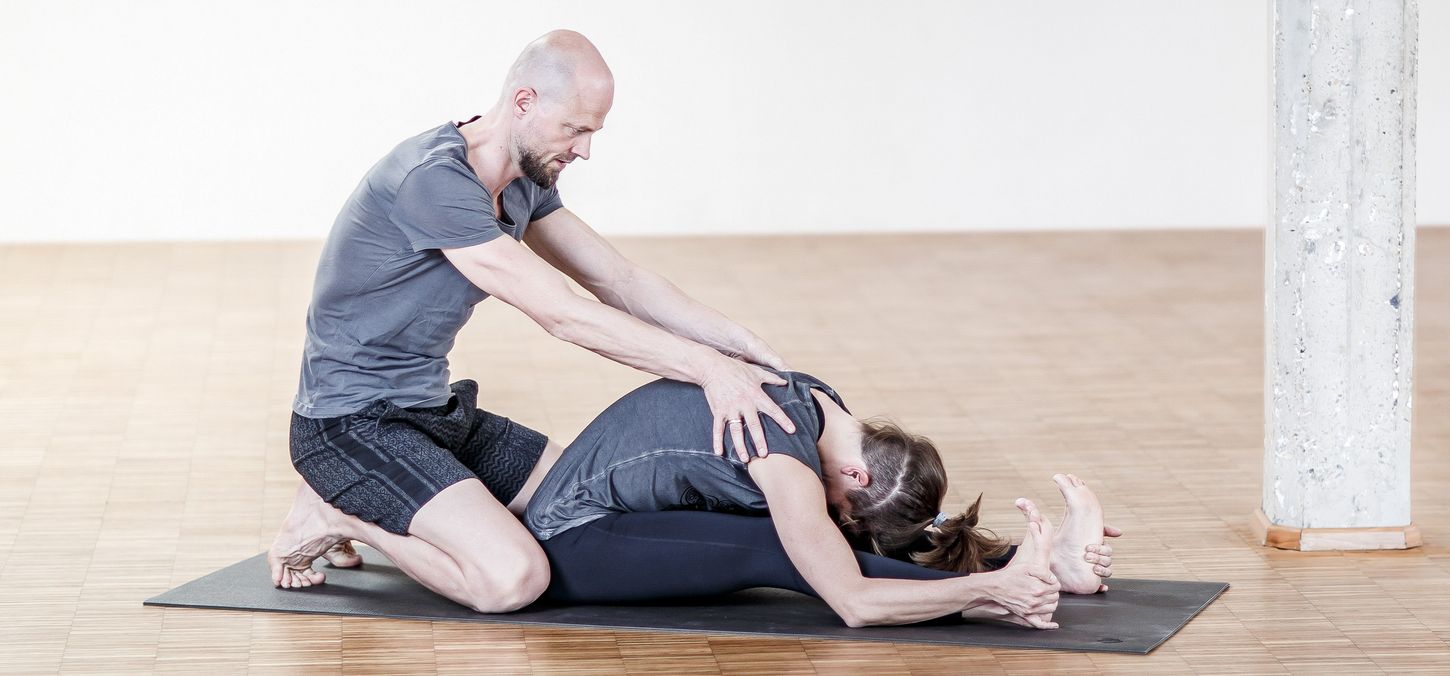

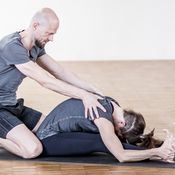
 Dr. Ronald Steiner
Dr. Ronald Steiner
 Kristen Sikorsky Racco
Kristen Sikorsky Racco
 Paul Königer
Paul Königer
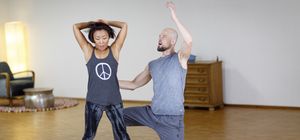
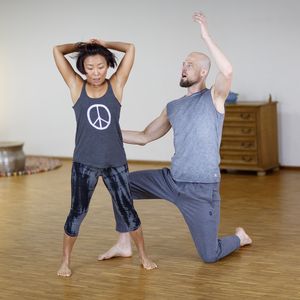
 Dr. Ronald Steiner
& more
Dr. Ronald Steiner
& more


